Atari Lynx Vs. Sega Game Gear: The Portable Comparison
One question you never hear people answer is what colored, backlit console was better in the 90s. This is why I’ve decided to do a Sega Game Gear vs Atari Lynx comparison. Both were intended to overtake the Nintendo Game Boy, and they failed to do so. Regardless both handhelds carved out their own niches and have their own strengths and weaknesses. These two consoles released within the same timeframe, and they had similar capabilities. That’s why I’ve decided to compare the two today. Neither reached the same heights of the Game Boy, but they served as great alternatives to the more rich folk. With that out of the way I’m going to directly compare them. Without further adieu this is a comparison of the Atari Lynx vs the Sega Game Gear.
Let’s begin by giving some background information on the two handheld consoles.
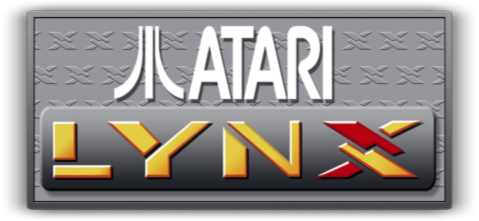
Atari Lynx
Release Year: 1989 (North America)
At this point Atari lost almost all of their market share in the home console market to Nintendo. After this they decided to take on the Game Boy head on. Nintendo didn’t yet have a huge grasp on the portable market, and so it was ripe for the taking. The Atari Lynx was significantly more powerful than the Game Boy, and had a backlit color screen to boot. They threw everything they had behind it and by and large were the best challenger up to this point. Unfortunately the Atari Lynx was huge, and required a ton of batteries to operate. On the plus side several games were made to be played from the vertical screen perspective. This was absolutely innovative back then, but only a select few released made use of this.
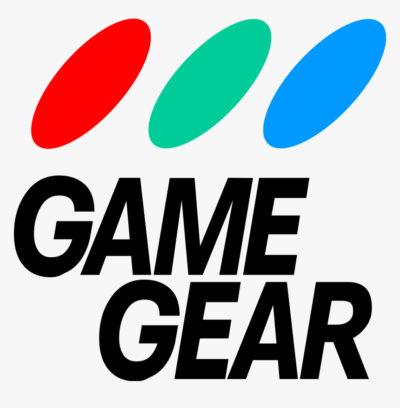
Sega Game Gear
Release Year: 1990 (North America)
Sega was in a much better position in the market than Atari when they released the Game Gear. They positioned it as a companion system to the Sega Genesis with many companion titles and entries in their most popular series. It’s interesting to note that Sega based the hardware on their Master System which made ports very easy to bring over to the small screen. It didn’t have the same vertical perspective that the select few Atari Lynx games made use of. Instead Sega focused on the more traditional perspective to bring down ports of their most popular titles to the platform. They also released a host of peripherals such as a TV tuner, but these never really caught on.
Hardware Comparison Console Design:
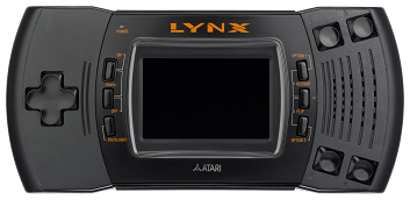
The Atari Lynx was an absolute behemoth in design. It’s huge, and actually difficult to hold. It has four face buttons with two on the bottom of the system and two on the top. Unfortunately these are spaced too far apart to use both sets at the same time. Atari released a second version of the hardware that was smaller, but with even that the second set of face buttons is out of reach. They’re exclusively designed for the few vertical games that take advantage of the perspective. Both versions of the Atari Lynx are uncomfortable to hold, and bigger than the Sega Game Gear.
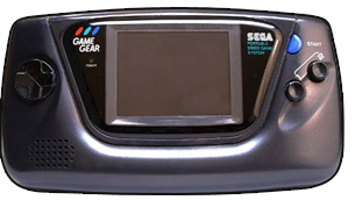
Sega only had one major iteration of the Game Gear hardware. Unfortunately this was also rather large and unwieldly when compared to even the Game Boy. Sega went with a more traditional set up offering only a directional pad and two face buttons. It was less innovative, but more functional overall. The buttons are easier to reach and cause less strain during long play sessions. The Sega Game Gear is crazy huge, but it’s still better than the Atari Lynx in this regard. The Lynx does get extra points for being able to be flipped so left handed gamers won’t have to struggle.
Winner: Sega Game Gear
System Durability:I have put the Atari Lynx through the measures. I have a carrying case for it, but even when dropped it works like a charm with absolutely no issues. Despite the huge size and heavy weight Atari designed a tank. Unfortunately the cartridges have the connections exposed. I have always hated this, and I can see this being an issue especially with handheld consoles. Personally I’ve put rather aged looking games into the system and they’ve worked like a charm. Still, I can see how this will be a problem if you don’t take care of your games.
The Game Gear is also built like a tank. I’ve put my system through the rounds and it has gone on trips with me where it was dropped. It still powered up and was perfectly fine. The first Game Gear I ever owned however was given to me by a friend, and that one had issues with the sound chip that I had to solve myself. Because of this I think corrosion may be an issue. I do like the fact that the connectors on the cartridges are move protected. Still, I’ve heard about more people having issues with the Game Gear than I have with the Lynx. That’s why Atari’s handheld wins in this category.
Winner: Atari Lynx
Screen Quality:Let’s get this out of the way right at the start. Both systems have trash screens. Atari and Sega were both really pushing the backlight and their technology just wasn’t there yet. The Game Gear can display more colors and at a higher resolution, but honestly on such a small display it’s hard to notice. The Atari Lynx’s screen is small, and has a strange tan hue to it’s backlight. Everything is hard to see regardless of lighting, but to it’s credit you can adjust the intensity of the backlight. I would have preferred they went the route of the Game Boy in this regard and saved battery life to be honest because it doesn’t help much.
The Sega Game Gear doesn’t fare much better. Instead of a tan hue it has an over saturated blue effect that’s really not easier to see. Fine details such as text can really cause strain on the eyes particularly on this platform. It also makes titles with faster moving gameplay, such as Sonic the Hedgehog, way more difficult to play. There’s a whole lot of ghosting here that can make some games an absolute chore to even look at. The Atari Lynx fares better here, but just slightly. Be warned that both screens are ugly as sin. With the Lynx however I didn’t have to hold the system at weird angles just to be able to see what was happening.
Winner: Atari Lynx
Game Media:

As I’ve already mentioned the Lynx games have exposed connectors. I haven’t had any issues with games not working so far, but it still worries me. Also their design in general makes them harder to store. They are thinner than Game Gear titles, but they have a weird lip at the top with no end label. I really have to ask what Atari was thinking with this because the carrying cases have to be heavily customized to support them. Major bummer for Atari in this regard.
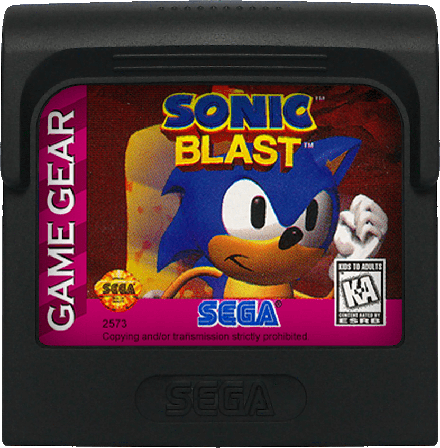
And on the other hand Game Gear cartridges are very visually appealing. This is mostly because they don’t have exposed connections. Still, I have to ask why Sega included the grooves at the top. I could understand if they were trying to include end labels but they didn’t, and it just makes storage a pain. The Sega Game Gear wins in this category, but honestly I’m not happy with either manufacturer’s solution to cartridge design.
Winner: Sega Game Gear
Graphical Capabilities:This is an extremely tough and close category in my opinion. On the Atari Lynx front the console struggled at times with 2D platformers and similar titles. You would expect some of these titles to run better than they actually do. On the other hand it pushed 3D scrolling and parallax like nothing else at the time. Games like Hyrdra and Blue Lightning could easily compete with Sega Genesis titles. There’s nothing on the Sega Game Gear that can compete in this realm. Some Atari Lynx games even look better than Game Boy Advance titles. It’s crazy how hard Atari was able to push the hardware.
And on the other hand the Sega Game Gear struggled with 3D scrolling, but had better frames of animation when it came to strictly 2D titles. This was basically a Sega Master System at heart. Some games like Sonic Blast even looked better than Genesis titles, but not in motion. When this hardware was pushed to go beyond 8-bit capabilities it often faltered. Still, third parties had an understanding of the hardware that allowed for traditional ports. This was a tough conclusion to come to, but I think the Atari Lynx has the most graphically impressive titles in it’s library overall.
Winner: Atari Lynx
Audio Capabilities:Here’s another category where neither are particularly good. Let’s start with the Atari Lynx. This console had a typical style of sound chip you would find in like the Atari 7800. This means it’s all bleeps and blips, but there’s really harsh bass. Also, screeching is an issue and because of this I found myself not wanting to wear headphones while playing. What the sound chip does allow for is some surprisingly good voice samples. These sound more clear than on the Sega Game Gear. Unfortunately many games have no music at all. I don’t know if it was tied to system power or anything like that, but it’s noticeable especially with the harsh sound effects in many games.
The hardware here in the Sega Game Gear was almost the same as it was in the Sega Master System. This includes the audio chip. Unfortunately this means it suffers from many of the same problems. The default bleeps and blips are higher pitched than in most 8-bit systems. This means it can sometimes leave your ears ringing. Sound effects in particular are the worst in this regard, but it still does fare better than the Atari Lynx’s screeching samples. I’d rate this one higher because it’s easier to listen to, and many of the Master System ports have nearly identical soundtracks. Using similar hardware definitely pays off in this respect.
Winner: Sega Game Gear
Extra Features:One of the best aspects of the Atari Lynx is the fact that it was designed to be held in multiple ways. I’m not left handed but I imagine for those that are this is a game changer. Other titles allow you to play the system holding the console sideways for a vertical perspective. A few games make use of this and while it’s uncomfortable to hold it’s still neat. Outside of that the system doesn’t really have any features besides playing games. That was however commonplace during the time the Atari Lynx was released. Some extra peripherals however would have been nice.
The Sega Game Gear on the other hand doesn’t have any additional features out of the box. It can’t be played in any other orientation. Sega did however make a number of peripherals for it. The Master Gear is easily the best of these and actually allowed you to play Master System games for the platform. That’s incredible and a fantastic feature if you ask me. Additionally there was a TV tuner peripheral released which allowed you to watch television using the antenna. It’s a good idea but is pretty much obsolete now. Plus, who wants to watch shows or movies on such a bad screen?
Winner: Sega Game Gear
Battery Life:One of the main reasons both of these handhelds failed was because they ate up batteries. The whole point behind a portable console is for it to be, well, portable. Both units use six AA batteries. Compare that to the Game Boy’s two and you have a real problem here. I use the Atari Lynx 2 which is supposedly a bit more efficient. Battery life is still abysmal and the system does not last long. Prepare to invest a lot of money if you plan to play this one on the go. Thankfully it can run off of DC power, and there’s even a handy car adapter that isn’t hard to track down. I highly recommend forgoing the batteries and just using these instead because it’s bad.
In my experiences the Sega Game Gear fares slightly worse. It must be the brighter backlight or maybe the hardware wasn’t optimized, but it really seems like you lose at least an hour when compared to the Atari Lynx II. It just isn’t well suited to be played in a portable fashion. Just like the Lynx Sega released both an AC and car adapter which is how you’re going to want to experience it. They actually took it a step further by releasing a rechargeable battery pack. Unfortunately this category is just for battery life so I’m not going to count that. The Atari Lynx gets the edge in this section.
Winner: Atari Lynx
Software Comparison Platformers:Side scrolling platform games were perhaps the most popular genre when both of these handhelds were in their prime. Unfortunately the Atari Lynx just didn’t have many big names in this genre. Original titles like Scrapyard Dog and Toki were fun, but they didn’t have sequels and were available on home consoles. Pac-Land was probably the most recognizable one but again this wasn’t an exclusive. On a high note the Atari Lynx did have an incredible port of the PC game Shadow of the Beast. The Atari Lynx really needed it’s own Mario, or even Sonic, and it just never got anything as polished or with the same level of appeal in this regard. Unfortunately the platformer offerings are a little lacking.
The Game Gear on the other hand had platformers in spades. It had tons of downports of console platforming titles, as well as a myriad of high quality licensed ones too. Sega released handheld iterations of their biggest franchises including Sonic the Hedgehog, Ristar, and more. It even had Treasure hits such as Dynamite Headdy and Gunstar Heroes. I mean, Sega released more than four mainline Sonic the Hedgehog titles for the system, and these were entirely original efforts unless you count the Master System versions which no one cared about. It’s really no contest. The Sega Game Gear wins this category hands down.
Winner: Sega Game Gear
Puzzle:The puzzle genre is responsible for handheld gaming taking off in the first place with Tetris. Every handheld needed at least one major block falling puzzler, but unfortunately the Lynx never caught it’s stride in this genre. Developers instead focused on more quirky and unusual puzzle games here. Chip’s Challenge is an amazing title, and easily the Lynx’s best offering, but it’s an overhead maze type. It’s just not going to scratch the Tetris itch. Block Out has an unusual perspective and off-key gameplay which is mildly enjoyable but again, not what most puzzle fans are looking for. The same goes for Block Out. I’m surprised Atari didn’t simply copy the Tetris formula because it feels like a lost opportunity here.
On the other hand the Sega Game Gear has a treasure trove of puzzle games. It doesn’t have Tetris per se, but multiple versions of Columns, Puyo Puyo, and Baku Baku Animal more than make up for this. That’s only scratching the surface; there are so many options here and some really great puzzle games. It even has the quirkier releases like Marble Madness, Devilish (one of my all time favorites), and Lemmings. If you have any interest in the puzzle genre at all then the Game Gear is sure to have something that you’ll enjoy. Like with platformers the Sega Game Gear is the clear winner in a landslide.
Winner: Sega Game Gear
Fighting:When the Lynx was in it’s prime the fighting genre was beginning to take off. Unfortunately most developers completely skipped releasing ports of their arcade titles for it. This is a real shame because something like Mortal Kombat would have fit well with Atari’s style. Instead there’s just one fighting game for the platform, and it’s not a good one. If you wanted to go head to head in a tournament style brawl your only option here was Pit Fighter. Granted, it looks better than most of the fighting games on the Sega Game Gear with it’s large digitzed graphics, but it’s not a good game. Pit Fighter was not good on any platform, and it’s even worse on the Atari Lynx.
Meanwhile the Sega Game Gear has a plethora of fighting games. Unfortunately most of them are not very good, but they’re better than Pit Fighter at least. You have downports of the three Mortal Kombat titles but they’re barely playable if I’m honest. Then there’s Primal Rage which doesn’t fare much better. Samurai Shodown and Fatal Fury Special however are decent and the fact that Sega themselves released a special version of Virtua Fighter for the system is neat. This was in an era where fighting games weren’t big on handheld consoles so I think gamers were more happy to play any one-on-one fighter they could get on a handheld. The Game Gear wins this category in a landslide.
Winner: Sega Game Gear
Role Playing Games:This is another category where the Sega Game Gear is the..
* This article was originally published here
Comments